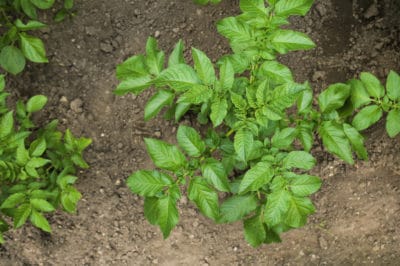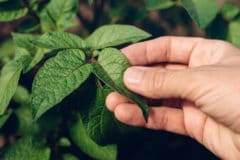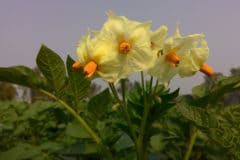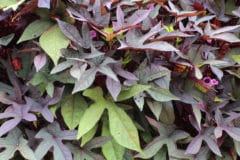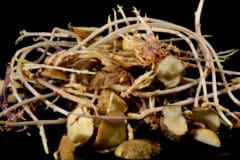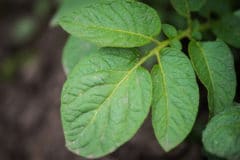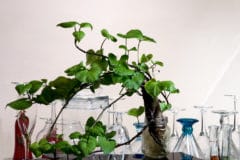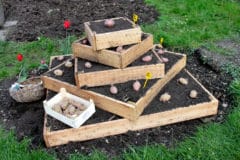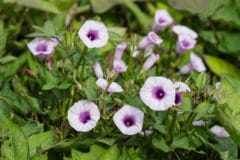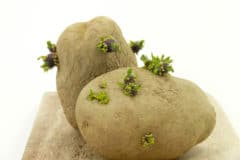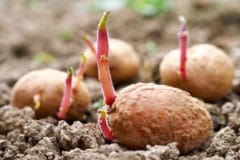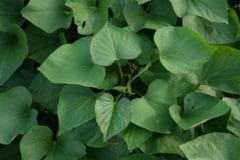The Potato Plant
Potatoes are a cool-season root crop that can be grown in all USDA Zones. Members of the nightshade family, they may grow several feet above ground. However, it is the swollen portions of the roots that become the edible tubers people eat. Potatoes come in a number of colors and in different shapes – there are more than 4,000 known potato varieties.
Growing Potatoes
Potatoes are one of the easier vegetable crops to grow. They require:
- Very fertile soil, rich in potassium and nitrogen.
- Excellent drainage to prevent fungal disease.
- Regular water while growing.
- Hilling – adding soil to partially bury the vine as it grows.
- Curing in a warm, dark area for a week or two prior to storage.
Above Ground
If you’ve ever seen a tomato plant, you may have noticed that it looks a lot like a potato. These “cousins” share several characteristics. The leaves are shaped like tear drops and have lightly serrated edges. Leaves are light to dark green and heavily crinkled. Many feel fuzzy to the touch. Leaves occur alternately on the stem.
Below Ground
The stem of the potato is usually white to ivory-colored. Although a few roots grow along its length, most are clustered at the bottom of the plant. Potato tubers develop all along the buried stem. This characteristic is why potatoes are hilled by placing additional soil on the growing tops. The plant will develop more tubers along the buried stem.
Colors and Shapes
The potato vine is usually light to dark green, but some varieties may have pink or purple tinges, especially in the new shoots. The tubers themselves may be tan, red, purple, blue, yellow or gold on the outside. White flesh is common no matter what the outside color, but some varieties are red, yellow, blue or purple inside. Shapes range from round or oval to elongated oblong.
Flowers
Potato flowers are often striking. The petals may be individual or connected, and many have points or ruffled edges. Colors range from white through blue, purple and pink. Whatever the base color, the flower may be streaked or tinged with pink or white. The flowers may produce tiny green seed balls that resemble clusters of cherry tomatoes.
